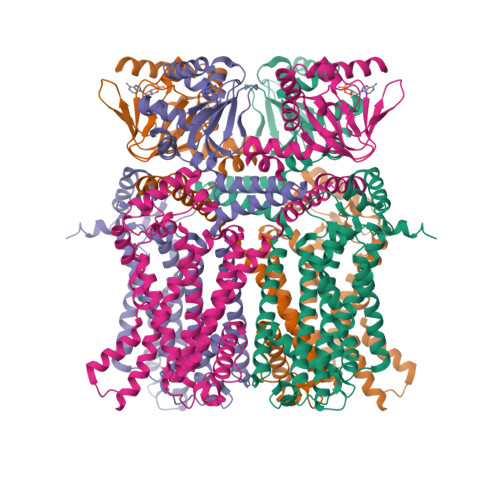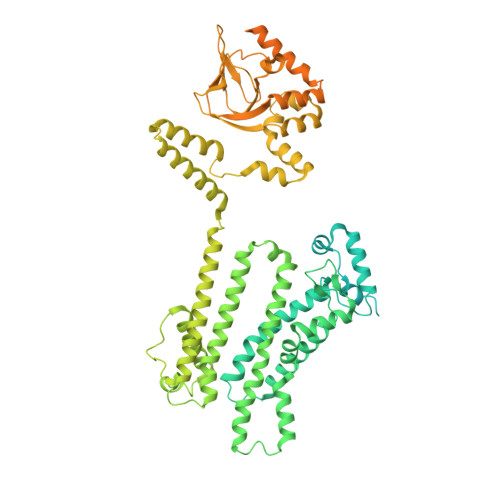Gating movements and ion permeation in HCN4 pacemaker channels.
Saponaro, A., Bauer, D., Giese, M.H., Swuec, P., Porro, A., Gasparri, F., Sharifzadeh, A.S., Chaves-Sanjuan, A., Alberio, L., Parisi, G., Cerutti, G., Clarke, O.B., Hamacher, K., Colecraft, H.M., Mancia, F., Hendrickson, W.A., Siegelbaum, S.A., DiFrancesco, D., Bolognesi, M., Thiel, G., Santoro, B., Moroni, A.(2021) Mol Cell 81: 2929-2943.e6
- PubMed: 34166608
- DOI: https://doi.org/10.1016/j.molcel.2021.05.033
- Primary Citation of Related Structures:
7NMN, 7NP3, 7NP4 - PubMed Abstract:
The HCN1-4 channel family is responsible for the hyperpolarization-activated cation current I f /I h that controls automaticity in cardiac and neuronal pacemaker cells. We present cryoelectron microscopy (cryo-EM) structures of HCN4 in the presence or absence of bound cAMP, displaying the pore domain in closed and open conformations. Analysis of cAMP-bound and -unbound structures sheds light on how ligand-induced transitions in the channel cytosolic portion mediate the effect of cAMP on channel gating and highlights the regulatory role of a Mg 2+ coordination site formed between the C-linker and the S4-S5 linker. Comparison of open/closed pore states shows that the cytosolic gate opens through concerted movements of the S5 and S6 transmembrane helices. Furthermore, in combination with molecular dynamics analyses, the open pore structures provide insights into the mechanisms of K + /Na + permeation. Our results contribute mechanistic understanding on HCN channel gating, cyclic nucleotide-dependent modulation, and ion permeation.
Organizational Affiliation:
Department of Biosciences, University of Milan, Milan, Italy.



















